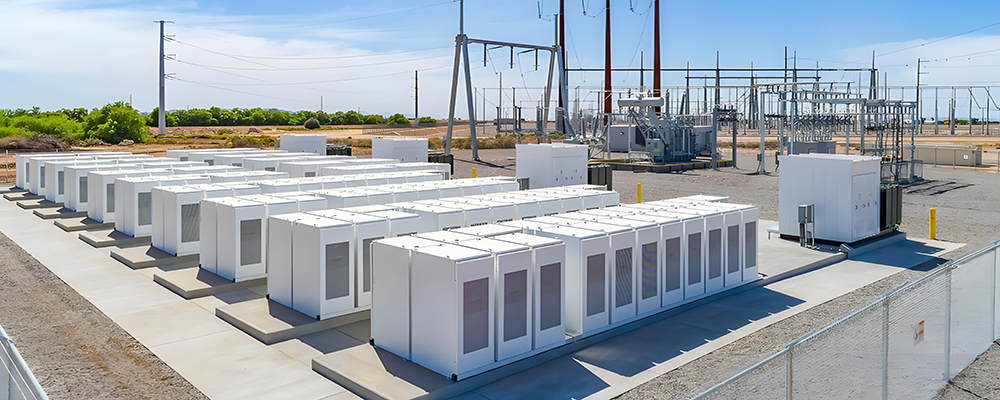Beyond the Basics: Advanced Insights into Utility-Scale Battery Storage for Grid Operators and Investors
Introduction – Why Utility-Scale Storage Is Evolving
Utility-scale battery storage has transitioned from a niche technology to a critical component of modern energy systems. While traditional articles provide basic overviews of large-scale storage, today’s grid operators and investors face complex challenges: integrating intermittent renewable generation, managing peak demand, and optimizing revenue streams. Advanced solutions now extend beyond simple lithium-ion installations, addressing long-duration storage, intelligent energy management, and evolving regulatory frameworks.
Long-Duration Storage Technologies and Innovations
Flow Batteries (Vanadium, Zinc-Bromine)
Flow batteries are emerging as a viable solution for multi-hour and long-duration energy storage. Unlike lithium-ion batteries, they allow decoupled energy and power scaling, making them suitable for projects requiring 4–12+ hours of discharge. Key advantages include:
- High cycle life (10,000+ cycles for vanadium redox systems)
- Safe thermal profile and lower fire risk
- Flexibility in energy scaling without oversizing power electronics
Emerging Chemistries (Iron-Air, Solid-State, Hybrid Systems)
Next-generation chemistries, such as iron-air and solid-state batteries, offer potential for ultra-long-duration storage and reduced lifecycle costs. Hybrid systems, combining short-duration lithium-ion with long-duration flow or iron-air modules, allow utilities to balance fast response with extended energy discharge, meeting diverse grid needs.
Modular and Scalable Designs
Modern utility-scale projects increasingly rely on containerized, modular battery systems. Features include:
- Liquid cooling for thermal stability and longevity
- Rapid deployment and ease of transportation
- Simplified maintenance and module replacement
For operators seeking turnkey solutions, the LEOCH Battery BESS offers a modular, scalable, and fully integrated system optimized for both grid and commercial applications.
Advanced Economic Models for Utility-Scale Storage
Levelized Cost of Storage (LCOS) vs LCOE
Understanding LCOS is critical for evaluating storage projects. It accounts for capital expenditure, operational costs, and degradation over time, offering a more accurate financial picture than simple LCOE metrics.
Revenue Streams Across Markets
Utility-scale storage can monetize energy in multiple ways:
- Energy arbitrage: buying low, selling high during peak demand
- Frequency regulation: providing ancillary services to stabilize grid voltage and frequency
- Capacity market participation: receiving payments for available reserve capacity
- Renewable firming: smoothing output from wind and solar generation
Project Financing and PPA Innovations
Innovative financing structures, such as storage-as-a-service, power purchase agreements (PPAs), and government incentives, are expanding adoption. These models lower upfront capital requirements and improve ROI for investors while maintaining predictable cash flows.
Smart Grid Integration and EMS Optimization
AI & Predictive Control
Advanced Energy Management Systems (EMS) use AI algorithms to optimize charge/discharge cycles, forecast renewable output, and maximize battery lifespan. Predictive maintenance can reduce downtime and minimize operational risk.
Hybrid Energy Systems
Combining solar, wind, and storage in hybrid microgrids or utility-connected systems allows operators to enhance reliability and reduce costs, particularly in regions with high renewable penetration.
Virtual Power Plant (VPP) Participation
Utility-scale batteries can aggregate multiple installations to participate as a Virtual Power Plant, enabling distributed assets to provide centralized grid services and unlocking additional revenue streams.
Safety, Standards, and Regulatory Updates
Latest UL, NFPA, ISO, and EU Standards
Recent standards such as UL9540, NFPA855, and IEC 62933 set strict requirements for fire safety, battery management, and system monitoring. Staying compliant is critical for project approval, insurance, and long-term operation.
Safety Innovations
Modern BESS incorporate:
- Thermal runaway detection
- Automated fire suppression systems
- Remote monitoring and real-time diagnostics
These innovations significantly mitigate operational risks, especially for large-scale deployments.
Case Studies of Next-Gen Utility-Scale Projects
Several North American projects illustrate the shift to long-duration, high-capacity storage:
- Multi-hour flow battery systems in California providing peak shaving and renewable firming
- Hybrid lithium-ion and flow battery installations in Texas optimizing frequency regulation revenue
- Containerized BESS deployments in New York supporting microgrid resilience
These examples demonstrate how technology choice, system design, and market participation directly affect both operational performance and financial outcomes.
Future Outlook – What Grid Operators and Investors Should Watch
The utility-scale battery storage sector is rapidly evolving:
- Long-duration storage will become increasingly critical for 100% renewable grids
- Hybrid and AI-optimized systems will dominate new installations
- Battery recycling and circular economy models will reduce lifecycle costs and environmental impact
- Policy and market innovation—capacity markets, incentives, and storage mandates—will drive strategic investments
Operators and investors who adopt advanced technical designs and financial models early will gain a competitive advantage in the growing storage market.
Recommended Reading
- Understanding Utility Battery Systems: Comprehensive Guide for Grid-Scale Energy Storage
Explore the key components and operational principles of grid-scale battery systems, and learn how to optimize performance, reliability, and efficiency for utility projects. - Utility-Scale Battery Storage in the U.S.: Market Outlook, Drivers, and Opportunities
Discover the latest market trends, policy incentives, and investment opportunities shaping utility-scale battery storage across the U.S., and understand the factors driving adoption.


